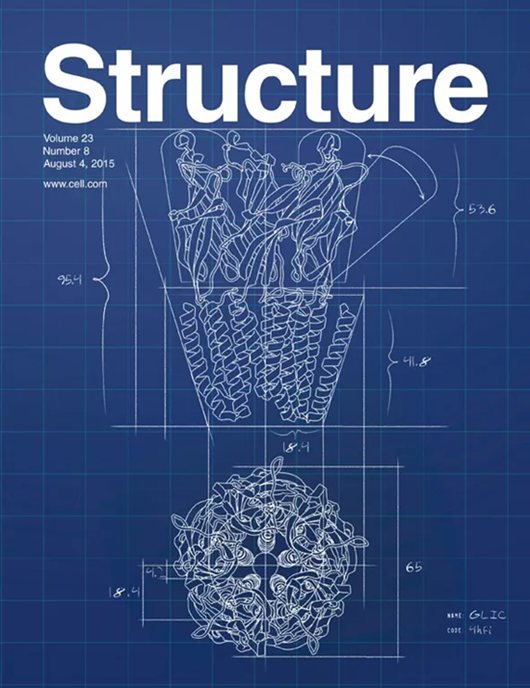IF 4.4
2区 生物学
Q2 BIOCHEMISTRY & MOLECULAR BIOLOGY
引用次数: 0
摘要
拟南芥辅酶转运体 ABCB1 在植物生长和发育的调控中发挥着重要作用。虽然其同源物 ABCB19 以前曾被证明能转运黄铜类固醇(BR)--另一类必需激素,但 ABCB1 介导 BR 转运的能力仍未得到探索。在本研究中,我们通过体外黄铜内酯(BL)转运试验证明了 ABCB1 也能转运黄铜类固醇。利用单颗粒冷冻电镜,我们测定了ABCB1在apo状态、ANP结合状态、BL结合状态以及BL和ANP结合状态下的多种内向构象结构。BL 与两个跨膜结构域的大空腔结合,导致构象发生轻微变化。此外,我们还获得了 ABCB1 向外构象的结构。通过比较这些不同的构象,我们阐明了 ABCB1 转运激素的可能机制。这些高分辨率结构有助于我们了解 ABCB1 识别激素和转运机制的结构基础。本文章由计算机程序翻译,如有差异,请以英文原文为准。

Structures and mechanisms of the ABC transporter ABCB1 from Arabidopsis thaliana
The Arabidopsis thaliana auxin transporter ABCB1 plays a fundamental role in the regulation of plant growth and development. While its homolog ABCB19 was previously shown to transport brassinosteroids (BR), another class of essential hormones, the ability of ABCB1 to mediate BR transport has remained unexplored. In this study we show that ABCB1 also transports brassinosteroids with an in vitro brassinolide (BL) transport assay. Using single-particle cryo-electron microscopy, we determined ABCB1 structures in multiple inward-facing conformations in the apo state, ANP-bound state, BL-bound state, and the both BL- and ANP-bound state. BL binds to the large cavity of two transmembrane domains, inducing a slight conformational change. Additionally, we obtained the structure of ABCB1 in an outward-facing conformation. By comparing these different conformations, we elucidated the possible mechanism of hormone transport by ABCB1. These high-resolution structures help us to understand the structural basis for hormone recognition and transport mechanisms of ABCB1.
求助全文
通过发布文献求助,成功后即可免费获取论文全文。
去求助
来源期刊

Structure
生物-生化与分子生物学
CiteScore
8.90
自引率
1.80%
发文量
155
审稿时长
3-8 weeks
期刊介绍:
Structure aims to publish papers of exceptional interest in the field of structural biology. The journal strives to be essential reading for structural biologists, as well as biologists and biochemists that are interested in macromolecular structure and function. Structure strongly encourages the submission of manuscripts that present structural and molecular insights into biological function and mechanism. Other reports that address fundamental questions in structural biology, such as structure-based examinations of protein evolution, folding, and/or design, will also be considered. We will consider the application of any method, experimental or computational, at high or low resolution, to conduct structural investigations, as long as the method is appropriate for the biological, functional, and mechanistic question(s) being addressed. Likewise, reports describing single-molecule analysis of biological mechanisms are welcome.
In general, the editors encourage submission of experimental structural studies that are enriched by an analysis of structure-activity relationships and will not consider studies that solely report structural information unless the structure or analysis is of exceptional and broad interest. Studies reporting only homology models, de novo models, or molecular dynamics simulations are also discouraged unless the models are informed by or validated by novel experimental data; rationalization of a large body of existing experimental evidence and making testable predictions based on a model or simulation is often not considered sufficient.
 求助内容:
求助内容: 应助结果提醒方式:
应助结果提醒方式:


